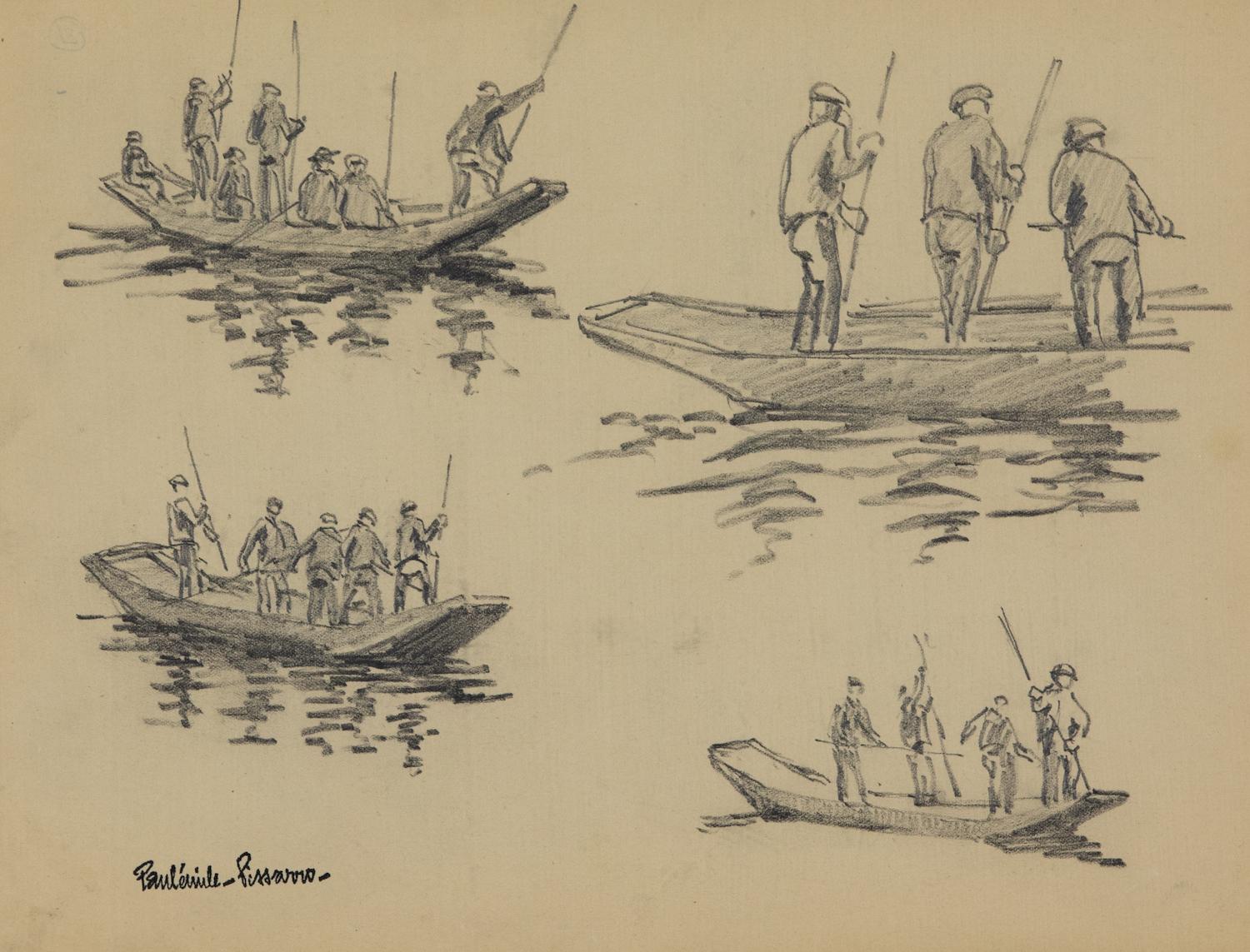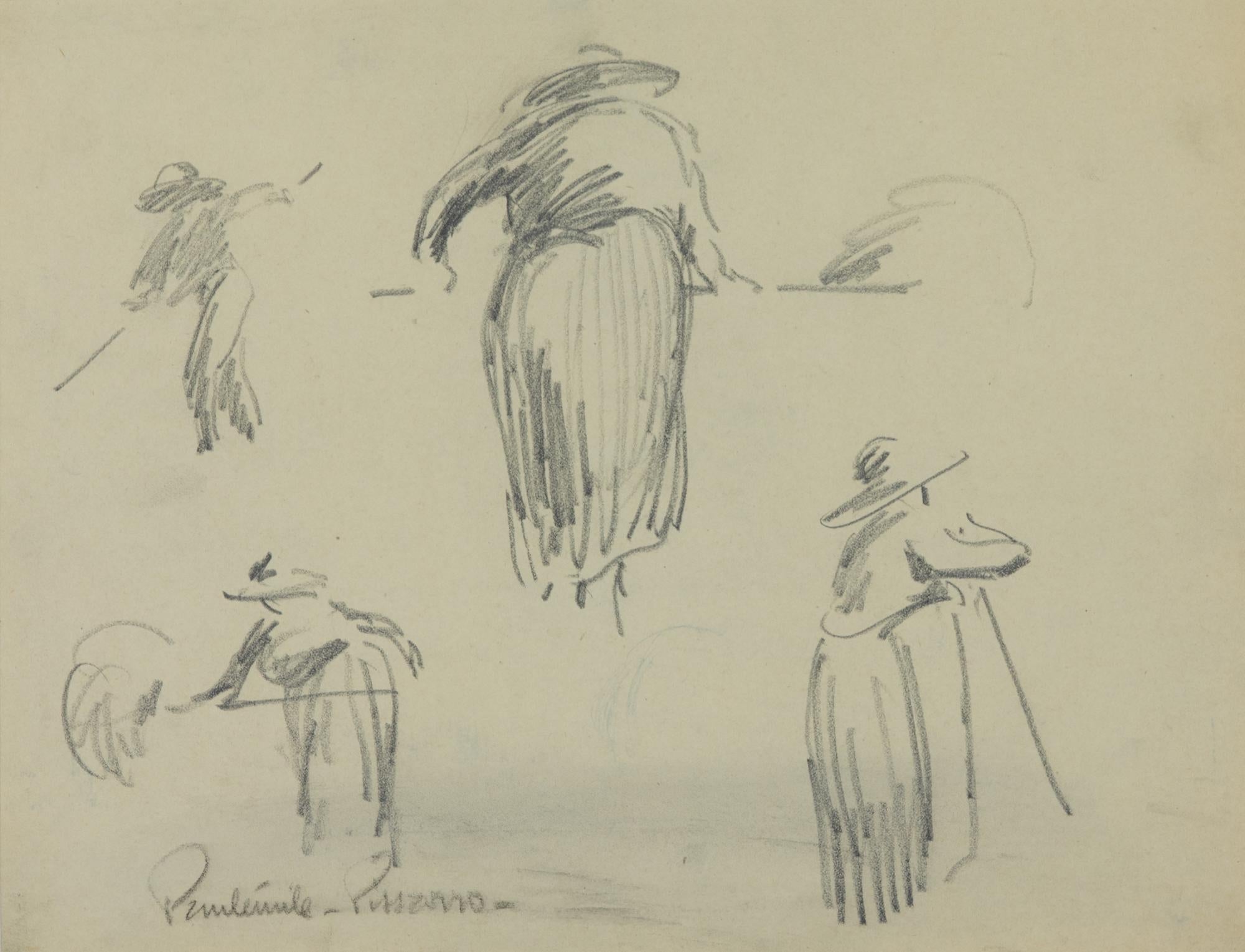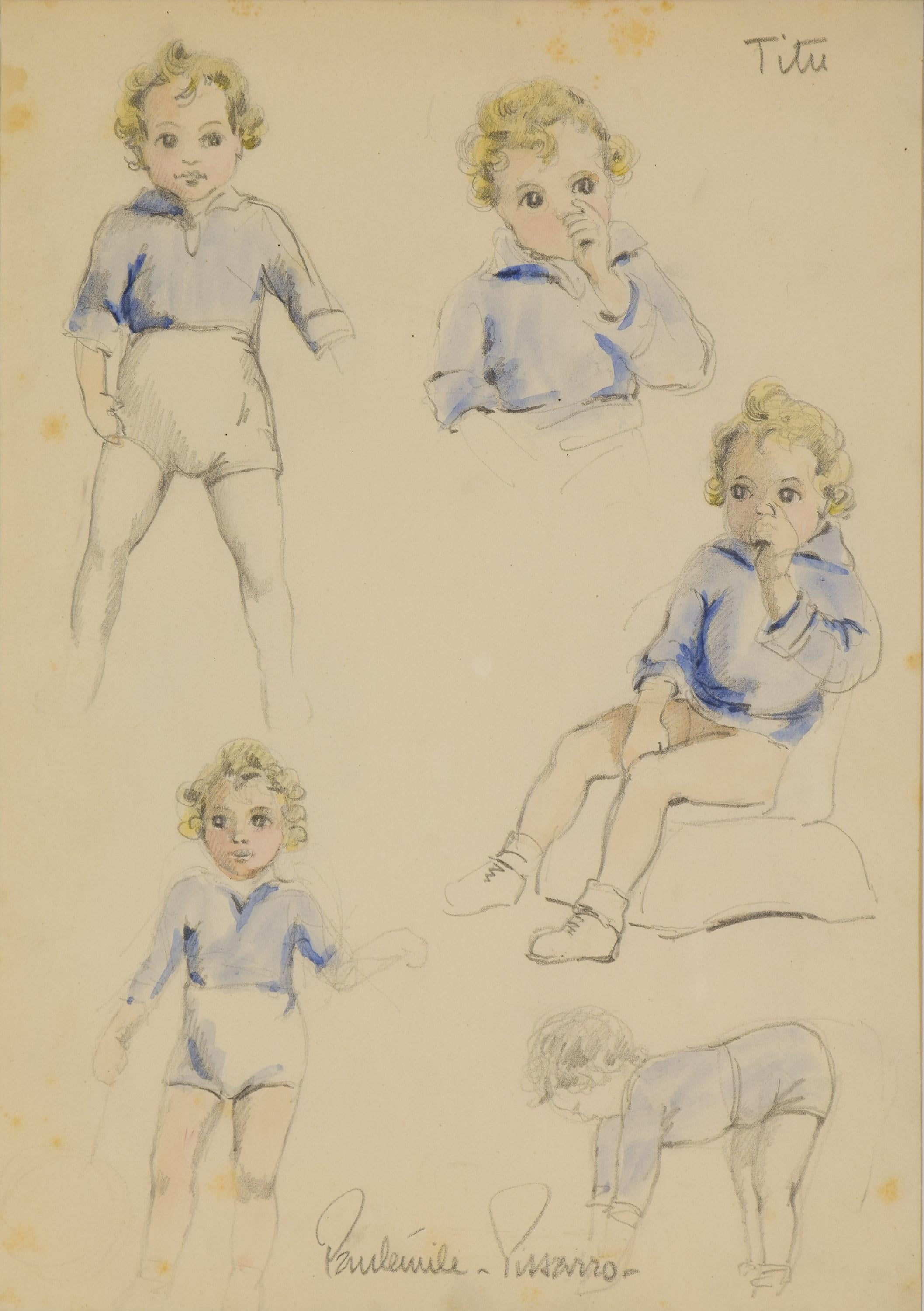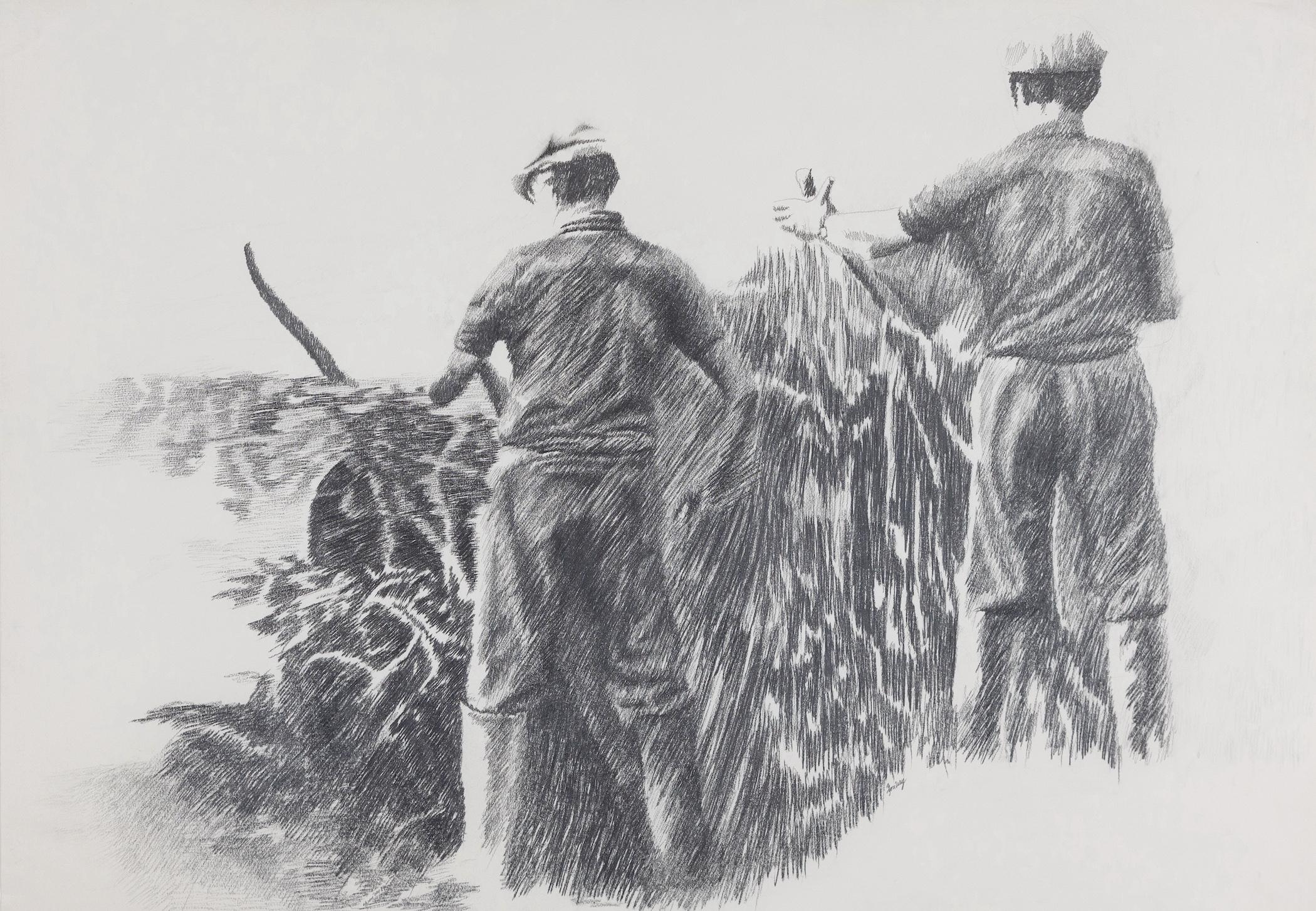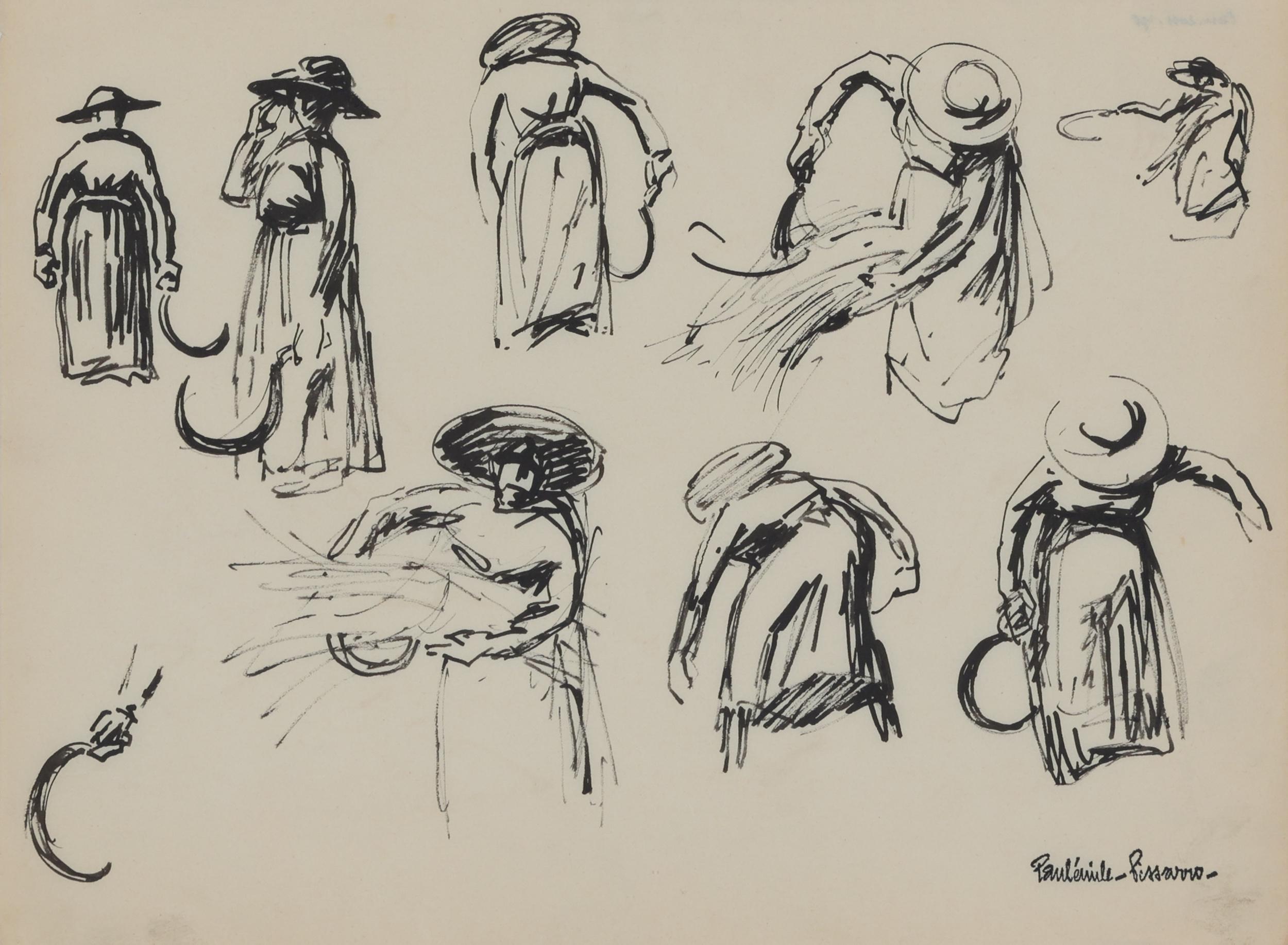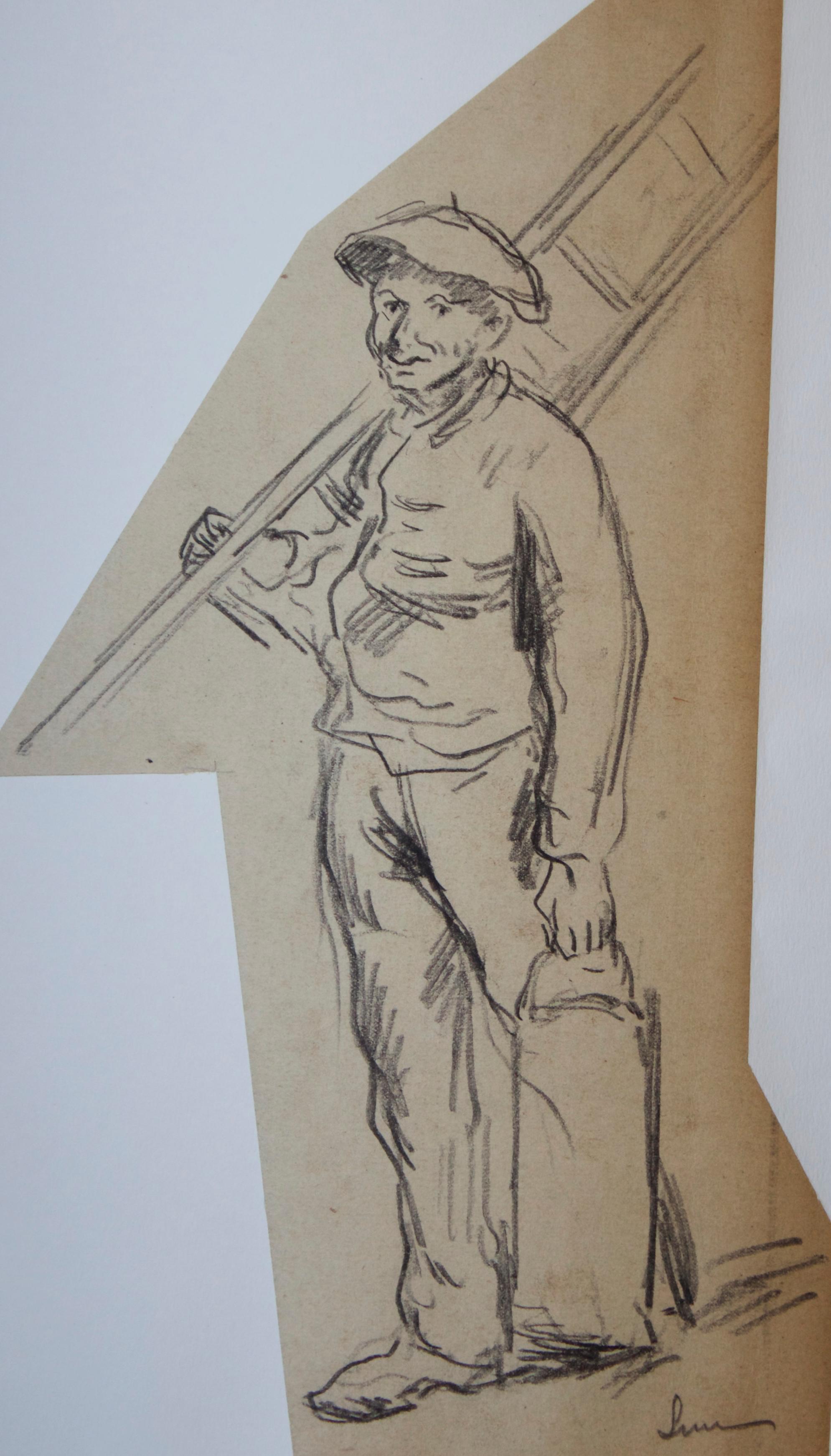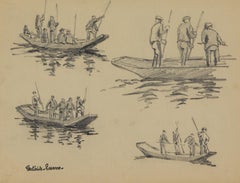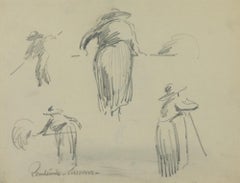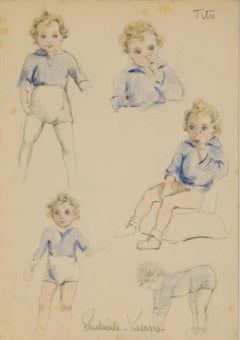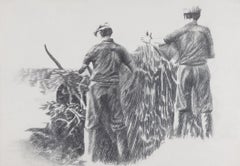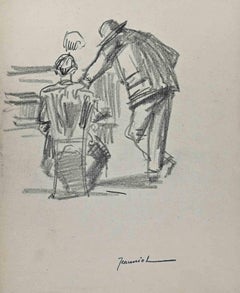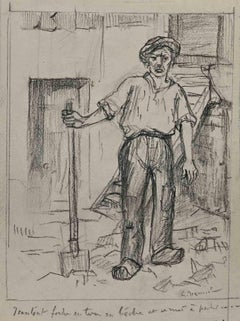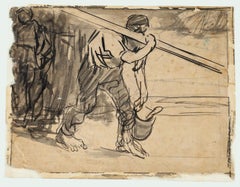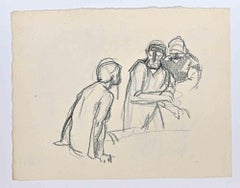Items Similar to Hommes Pagayant, Work on paper by Paulémile Pissarro - Drawing
Want more images or videos?
Request additional images or videos from the seller
1 of 4
Paulémile PissarroHommes Pagayant, Work on paper by Paulémile Pissarro - Drawing
$1,250
£949.48
€1,094.12
CA$1,760.31
A$1,951.56
CHF 1,025.62
MX$23,883.94
NOK 12,808.99
SEK 12,022.51
DKK 8,166.92
About the Item
SOLD UNFRAMED
Hommes Pagayant, Painting by Paulémile Pissarro
Graphite and charcoal on paper
27 x 20.3 cm (10 ⁵/₈ x 8 inches)
Signed lower right, Paulémile-Pissarro-
Provenance
Estate of the Artist
Yvonne Pissarro, née Beaupel (wife of the Artist), by descent from the above, by 1972
This work is accompanied by a certificate of authenticity by Lélia Pissarro.
Artist biography
Paulémile Pissarro, Camille Pissarro’s youngest son, was born in Éragny in 1884 where he was brought up within the creatively fertile environment of his family home and, encouraged by his father, began drawing at an early age. Paulémile’s godfather was Claude Monet, who became his teacher and legal guardian after Camille’s death in 1903.
In 1905 Paulémile exhibited at the Salon des Indépendants for the first time. Although his father had supported Paulémile’s desire to be an artist, his mother was eager for him to learn a more practical trade. Therefore in 1908 he put aside his artistic pursuits to work as an automobile mechanic and test-driver, then later as a lace and textile designer, allowing him only a limited time to paint. Paulémile only fully dedicated himself to painting following a letter from his brother Lucien in London, who wrote to invite him to take part in an exhibition held in London. Subsequent to the successful sale of a number of watercolours he had sent over, the young artist became inspired to leave the textile factory and pursue a career in art.
By the 1920s Paulémile had become an established Post-Impressionist artist in his own right, spending the summer months escaping from Paris on painting trips with fellow artists Kees Van Dongen, Raoul Dufy, Maurice de Vlaminck and André Dunoyer de Segonzac. In 1922 Paulémile purchased a house in Lyons-la-Forêt, a small village within the region of his hometown of Éragny and Giverny, where he moved in with his first wife Berthe Bennaiche. During this time, he developed a form of Cubism inspired by Paul Cézanne whom he dearly admired, creating some wonderful paintings of the river Eure and its surrounding villages. There he formed a close friendship with his neighbour, the famous Art Deco designer Émile-Jacques Ruhlmann, who designed a stunning Art Deco studio for Paulémile adjacent to his house.
In 1930 he visited and fell in love with the Swiss Normandy area in the Calvados region, in particular the River Orne which runs through the valley adjacent to the villages of Clécy and St. Remy. The combination of rolling hills, bold meadows and the calm river weaving its way through the landscape offered Paulémile a new burst of inspiration. With his second wife Yvonne Beaupel, Paulémile eventually moved to Clécy in 1935, where he would remain for the rest of his life. Of their three children, both H. Claude and Yvon also became artists.
With his house backing on to the river Orne, Paulémile developed a new way of working using a boat as a floating studio, where he spent countless days painting the calm waters from between the riverbanks. Here the influence of his godfather Claude Monet became apparent, particularly in Paulémile’s depiction of water, which was revolutionised by the Impressionist icon. He also applied Monet’s lessons in horticulture to the creation of an abundant garden, offering him many more motifs for his new paintings. Alongside these river landscapes, he also painted the neighbouring hay fields, various snow scenes, some interiors and still lives. The most ambitious work in his oeuvre was a fresco painted on all four walls of his own dining room, depicting the adjacent river in which he includes family members, neighbours and friends.
In 1967 Paulémile had his first one-man show in the United States at Wally Findlay Galleries in New York. This led to widespread recognition and a degree of professional success that few Pissarro artists knew during their lifetime. Since his death in 1972, Paulémile remains one of the best known of Camille’s sons.
- Creator:Paulémile Pissarro (1884 - 1972, French)
- Dimensions:Height: 10.63 in (27 cm)Width: 8 in (20.3 cm)
- Medium:
- Movement & Style:
- Period:
- Condition:
- Gallery Location:London, GB
- Reference Number:1stDibs: LU261210918322
About the Seller
5.0
Recognized Seller
These prestigious sellers are industry leaders and represent the highest echelon for item quality and design.
Gold Seller
Premium sellers maintaining a 4.3+ rating and 24-hour response times
Established in 1964
1stDibs seller since 2015
104 sales on 1stDibs
Typical response time: 2 hours
Associations
Society Of London Art Dealers
- ShippingRetrieving quote...Shipping from: London, United Kingdom
- Return Policy
Authenticity Guarantee
In the unlikely event there’s an issue with an item’s authenticity, contact us within 1 year for a full refund. DetailsMoney-Back Guarantee
If your item is not as described, is damaged in transit, or does not arrive, contact us within 7 days for a full refund. Details24-Hour Cancellation
You have a 24-hour grace period in which to reconsider your purchase, with no questions asked.Vetted Professional Sellers
Our world-class sellers must adhere to strict standards for service and quality, maintaining the integrity of our listings.Price-Match Guarantee
If you find that a seller listed the same item for a lower price elsewhere, we’ll match it.Trusted Global Delivery
Our best-in-class carrier network provides specialized shipping options worldwide, including custom delivery.More From This Seller
View AllPêcheurs by Paulémile Pissarro - Drawing of fishermen
By Paul Emile Pissarro
Located in London, GB
Pêcheurs by Paulémile Pissarro (1884-1972)
Pencil on paper
23.1cm x 30.9
Stamped lower left, Paulémile-Pissarro-
This work is accompanied by a certificate of authenticity by Lélia P...
Category
Mid-20th Century Post-Impressionist Figurative Drawings and Watercolors
Materials
Paper, Pencil
Le Ramassage de Foin by Paulémile Pissarro - Work on paper
By Paul Emile Pissarro
Located in London, GB
Le Ramassage de Foin by Paulémile Pissarro (1884-1972)
Charcoal on paper
26 x 33 cm (10 ¹/₄ x 13 inches)
Signed lower left, Paulémile- Pissarro-
This work is accompanied by a certif...
Category
20th Century Post-Impressionist Figurative Drawings and Watercolors
Materials
Paper, Charcoal
Études sur Titu by Paulémile Pissarro - Study drawing, 1938
Located in London, GB
Études sur Titu by Paulémile Pissarro (1884 - 1972)
Watercolour and pencil on paper
33.5 x 23.6 cm (13 ¹/₄ x 9 ¹/₄ inches)
Signed lower middle Paulémile-Pissarro- and inscribed upper...
Category
1930s Post-Impressionist Landscape Drawings and Watercolors
Materials
Paper, Watercolor, Pencil
Farmhands by Yvon Pissarro - Figurative drawing
By Yvon Pissarro
Located in London, GB
Farmhands by Yvon Pissarro (b. 1937)
Pencil on paper
75 x 108 cm (29 ¹/₂ x 42 ¹/₂ inches)
Signed lower right, Yvon Vey
Provenance: Studio of the Artist, Montpellier
Artist biograph...
Category
1980s Modern Figurative Drawings and Watercolors
Materials
Paper, Pencil
Etude d'une Maraîchère coupant l'herbe by Paulémile Pissarro - work on paper
Located in London, GB
Etude d'une Maraîchère coupant l'herbe by Paulémile Pissarro (1884 - 1972)
Ink on paper
22.6 x 30.9 cm (8 ⁷/₈ x 12 ¹/₈ inches)
Signed lower right, Paulémile-Pissarro
Study of a vege...
Category
20th Century Post-Impressionist Landscape Drawings and Watercolors
Materials
Paper, Ink
Work on paper by Maximilien Luce titled Ouvrier au Travail
By Maximilien Luce
Located in London, GB
Sold unframed
Ouvrier au Travail by MAXIMILIEN LUCE (1858 - 1941)
Black pencil on paper
29 x 17 cm (11 ³/₈ x 6 ³/₄ inches)
Signed lower right, Luce
Maximilien Luce was born in Pari...
Category
20th Century Figurative Drawings and Watercolors
Materials
Color Pencil
You May Also Like
The Men From The Back - Drawing By Pierre Georges Jeanniot-Early 20th Century
By Pierre Georges Jeanniot
Located in Roma, IT
The Men From The Back is an original pencil drawing on paper realized by painter Pierre Georges Jeanniot (1848-1934).
Drawing in Charcoal.
Hand-signed on the lower.
Good condition...
Category
Early 20th Century Modern Figurative Drawings and Watercolors
Materials
Pencil
Worker - Original Drawing By Pierre Georges Jeanniot - Early 20th century
By Pierre Georges Jeanniot
Located in Roma, IT
Worker is an original Drawing on paper realized by the painter Pierre Georges Jeanniot (1848-1934).
Drawing in carbon Pencil.
Hand-signed on the lower.
Good conditions except for ...
Category
Early 20th Century Modern Portrait Drawings and Watercolors
Materials
Pencil
Worker - Ink and Pencil Drawing by G. Galantara - Early 20th Century
By Gabriele Galantara
Located in Roma, IT
Worker is an original drawing in pencil and watercolor realized by Gabriele Galantara, the state of preservation of the artwork is good and aged, applied on white cardboard.
Image d...
Category
Early 20th Century Figurative Drawings and Watercolors
Materials
Pencil, Ink
Les Hommes - Drawing by Hermann Paul - Early 20th Century
Located in Roma, IT
Les Hommes is a charcoal Drawing realized by Hermann Paul .
On the back another drawing. Passpartout included cm 35x51
Good condition.
René Georges Herma...
Category
Early 20th Century Modern Figurative Drawings and Watercolors
Materials
Paper, Charcoal
The Fishermen - Drawing by Mino Maccari - 1930s
By Mino Maccari
Located in Roma, IT
Pencil and watercolor drawing realized by Mino Maccari in 1930s.
Not signed.
Very good condition.
Category
1930s Modern Figurative Drawings and Watercolors
Materials
Charcoal, Watercolor
Workers - Original Drawing - Mid 20th Century
Located in Roma, IT
Workers is an original Pencil Drawing realized by an artist of mid-20th century.
Good condition on cream colored paper.
Monogrammed stamp.
Category
Mid-20th Century Modern Figurative Drawings and Watercolors
Materials
Pencil
More Ways To Browse
Children Drawings
Garden Drawings
Paper Weave
Cubism Paintings Drawings
Vintage Garden Drawing
Charcoal Drawing Paris
Cezanne Drawings
Paper Lace
Paintings By Pissarro
Monet Drawings
Pissarro Camille
Pissarro Signed
Paintings By Camille Pissarro
Camille Pissarro Signed
Graphite And Charcoal Drawings
Charcoal Drawing Of Man
Charcoal Drawing London
Watercolor Snow Scene
